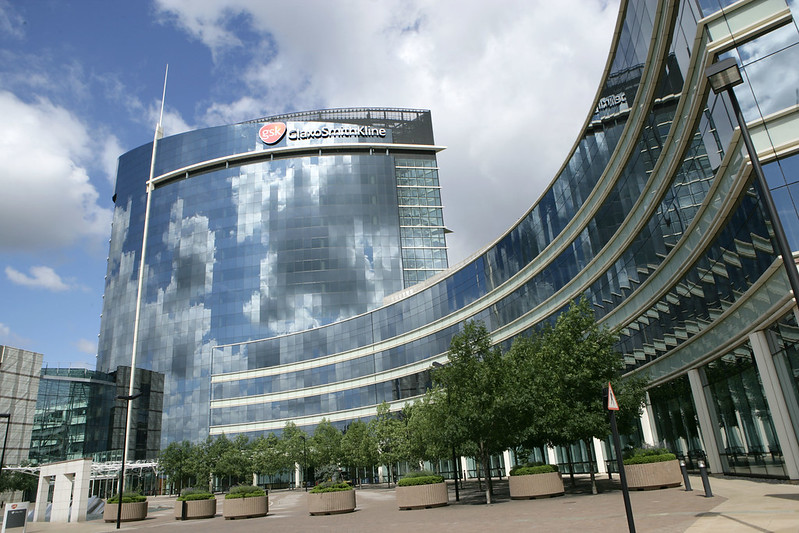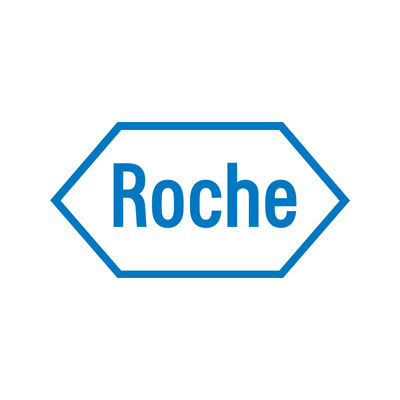Request Demo
Last update 08 May 2025
P2RX2
Last update 08 May 2025
Basic Info
Synonyms ATP receptor, deafness, autosomal dominant 41, DFNA41 + [6] |
Introduction ATP-gated nonselective transmembrane cation channel permeable to potassium, sodium and calcium (PubMed:10570044, PubMed:31636190). Activation by extracellular ATP induces a variety of cellular responses, such as excitatory postsynaptic responses in sensory neurons, neuromuscular junctions (NMJ) formation, hearing, perception of taste and peristalsis (By similarity). In the inner ear, regulates sound transduction and auditory neurotransmission, outer hair cell electromotility, inner ear gap junctions, and K(+) recycling (PubMed:23345450). Mediates synaptic transmission between neurons and from neurons to smooth muscle (By similarity). |
Related
6
Drugs associated with P2RX2Target |
Mechanism P2RX2 antagonists [+1] |
Active Org. |
Originator Org. |
Inactive Indication |
Drug Highest PhasePreclinical |
First Approval Ctry. / Loc.- |
First Approval Date20 Jan 1800 |
Target |
Mechanism P2RX2 antagonists [+1] |
Active Org. |
Originator Org. |
Active Indication |
Inactive Indication- |
Drug Highest PhasePreclinical |
First Approval Ctry. / Loc.- |
First Approval Date20 Jan 1800 |
Target |
Mechanism P2RX2 antagonists [+1] |
Active Org. |
Originator Org. |
Active Indication |
Inactive Indication- |
Drug Highest PhasePreclinical |
First Approval Ctry. / Loc.- |
First Approval Date20 Jan 1800 |
1
Clinical Trials associated with P2RX2NCT03116750
Post-Market Clinical Follow-up Study with the ASPIREX®S Endovascular System to Assess the Safety and Effectiveness in the Treatment of DVT Patients and Special Patient Groups
The ASPIREX®S Endovascular System is a rotating and aspirating catheter system. It is intended to be used for the percutaneous transluminal removal of fresh thrombotic or thromboembolic material from native blood vessels (or vessels fitted with stents, stent grafts or native or artificial bypasses) outside the cardiopulmonary, coronary and cerebral circulations.
CAPTUREX® , a catheter with a filter basket, is intended to be used for the filtering of emboli from blood vessels during potentially embolizing procedures on the patient.
ASPIREX®S and CAPTUREX® are CE-marked (Class III) medical devices. In this study the effectiveness and safety in the removal of thrombi in veins is assessed under real life setting.
CAPTUREX® , a catheter with a filter basket, is intended to be used for the filtering of emboli from blood vessels during potentially embolizing procedures on the patient.
ASPIREX®S and CAPTUREX® are CE-marked (Class III) medical devices. In this study the effectiveness and safety in the removal of thrombi in veins is assessed under real life setting.
Start Date03 Apr 2017 |
Sponsor / Collaborator |
100 Clinical Results associated with P2RX2
Login to view more data
100 Translational Medicine associated with P2RX2
Login to view more data
0 Patents (Medical) associated with P2RX2
Login to view more data
566
Literatures (Medical) associated with P2RX210 Jan 2025·ACS Pharmacology & Translational Science
Lipopolysaccharide-Neutralizing Peptide Modulates P2X7 Receptor-Mediated Interleukin-1β Release
Article
Author: Oldenburg, Johannes ; Dobbelstein, Ann-Kathrin ; Müller, Christa E. ; Weindl, Günther ; Klawonn, Anna ; Engelhardt, Jonas ; Abdelrahman, Aliaa ; Brandenburg, Klaus
01 Jan 2025·American Journal of Medical Genetics Part A
Novel Clinical Manifestation and Favorable Treatment Outcome of Cochlear Implant in a Chinese Family With Likely Pathogenic Variant of the P2RX2 Gene
Article
Author: Li, Qiang ; Lian, Chengyu ; Xu, Hongen ; Sun, Shuping ; Zuo, Bin ; Tang, Wenxue ; Lu, Wei
01 Dec 2024·Purinergic Signalling
Gene expression alterations of purinergic signaling components in obesity-associated intestinal low-grade inflammation in type 2 diabetes
Article
Author: Liñán-Rico, Andrómeda ; Barajas-Espinosa, Alma ; Guerrero-Alba, Raquel ; Valdez-Morales, Eduardo E ; Barrios-García, Tonatiuh ; Cruz-Muñoz, José R
5
News (Medical) associated with P2RX230 Nov 2023
Chronic refractory cough is characterized by a coughing that lasts for more than eight weeks. Patients often experience incontinence and depression as well.
By the time GSK sealed the deal on Bellus Health in April, the U.K. pharma knew exactly what not to do with the phase 3 chronic cough program. The company had watched Merck & Co. struggle with a rival med called gefapixant, taking notes.
“When we were doing due diligence on acquiring camlipixant we looked at Merck’s program and it was pretty clear there was a number of things that we could build into our phase 3 program to reduce and actually avoid all the problems they’d had,” GSK’s Chief Commercial Officer Luke Miels told Fierce Biotech in an interview.
Now, after closing the $2 billion deal in June, GSK is showcasing the phase 3 camlipixant program and ready to replace Merck as the market leader. Two studies called CALM-1 and CALM-2 are currently enrolling now. While GSK has a long history in respiratory diseases, chronic cough is new territory—but somehow, still fits in nicely with GSK’s portfolio.
“Typically when you've got an R&D portfolio, you want to be entering some novel areas that you maybe have not had history there. You need to do that to evolve your portfolio,” Miels said. “I led the deal to acquire camlipixant. That was a core element.”
Gefapixant and camlipixant are both P2X3 antagonists that act on a peripheral nervous system receptor that triggers neuronal hypersensitization and is linked to the urge to cough. It’s believed that by preventing stimulation of P2X3, the therapies can reduce the severity and frequency of cough.
Merck is technically closer to market. However, gefapixant suffered a major setback earlier in November when an FDA advisory committee recommended against approval. In a 12-1 vote, the committee questioned whether the evidence clearly showed that the therapy made a difference in reducing cough frequency.
But being first, Merck also had to contend with the fact that the FDA had no regulatory precedent in the indication. The agency noted it had “limited experience with the endpoints used in this program.” So Merck, and now GSK, are treading new regulatory ground. The FDA has not officially ruled on gefapixant but is expected to do so by Dec. 27.
In explaining why GSK is “more confident” in camlipixant, Miels stressed that this is a real, chronic and extremely difficult condition. To bring Bellus under GSK’s wing, Miels himself dove into learning about what these patients deal with every day. The official name is chronic refractory cough and it's characterized by a person who is coughing for more than eight weeks.
“I got very engaged. When you read the disruption to these people’s lives—a typical patient is middle-aged, female, 50 to 65, coughing around 500 times a day,” Miels said. Around 50% have urinary incontinence and over 50% experience depression because of “societal aesthetics” and personal relationship challenges, which Miels said has worsened since COVID.
Gefapixant is approved under the brand name Lyfnua in the EU, Japan and Switzerland, leaving the world’s biggest markets wide open for GSK to play with. The Big Pharma identified several ways to prime the clinical program for success during due diligence.
First off, the program has a central adjudication that ensures patients in the trial are in fact experiencing chronic refractory cough. Then, the trial is enrolling only the most severe patients.
“Because as you get to lower cough rates, it can be a bit idiosyncratic as to what's the mechanism causing the cough, whereas patients with more severe high cough frequency typically are those that have cough generated via the neuropathic pathway, which is where camlipixant works,” Miels explained.
Third, the phase 3 study features a six-week placebo washout period, where patients are taken off any other cough treatments. “So you get a true placebo effect,” Miels said. Merck’s study did not have this protocol, he pointed out.
The phase 3 trial was designed in close coordination with the FDA given the uncertainty the agency had about the first effort to get a chronic cough medicine approved, Miels said.
“There are advantages in coming second and we’ve heavily built the phase 3 program based on what the agency valued,” Miels said.
GSK has also acted to ensure the software they use to count the coughs in the study is shored up, because this caused a major delay for Merck last year. The FDA rejected gefapixant in January 2022 due to the cough counting system used in a phase 3 test for the drug. While the measure was changed, the FDA still flagged issues with whether the submitted cough count data truly proved clinical meaningfulness.
“We've been able to learn what issues Merck had with the cough software because these people wear these devices that count the number of coughs for up to a year and they're constantly recording,” Miels said.
Another thing that’s different with GSK’s program is the molecule itself. Miels said that camlipixant is much more selective to the P2X3 target, meaning fewer side effects. As a result, GSK can use the maximum dose.
“If you look at Merck’s product gefapixant, it's more promiscuous and also is able to target a sibling receptor which is called P2X2. And the problem with P2X2 is it's present in the tastebuds,” Miels said.
This causes a metallic or bitter taste in the mouth, with some patients losing their sense of taste entirely, which was something the FDA flagged in its briefing documents for the advisory committee meeting. The side effect was experienced by 65% of subjects receiving 45 mg and prompted discontinuation of treatment for 14% of patients.
Another issue with taste disturbance is that it can unblind the study, as patients who experience this side effect know they have received the study drug. Camlipixant, meanwhile, has shown lower taste disturbance and no discontinuations.
Miels again noted that these patients are quite desperate for relief from their condition and doctors also want to have an option to offer that truly works. GSK looked at market research in its due diligence efforts that polled doctors on whether they are happy with the options available to them.
“Three percent cite 'yes' and 97% are very unhappy with the options that they have,” Miels said.

Phase 3Drug ApprovalAcquisition
20 Apr 2023
GSK
this week that it would be acquiring Canada-based biotech Bellus Health for $2 billion.
The deal will give GSK access to Bellus’ specialty medicines and respiratory pipeline, including a potential best-in-class treatment for refractory chronic cough (RCC).
The drug, camlipixant, is a P2X3 antagonist with high selectivity and is currently in phase 3 development as a first-line treatment for adults with RCC. Based on the present clinical data, camlipixant has demonstrated potential in selectively suppressing P2X3 receptors, thereby reducing cough frequency in patients with RCC. Compared to other medications that generally target the P2X2/3 receptor, camlipixant may lead to a relatively low incidence of dysgeusia, an adverse event related to taste disturbance.
The all-cash deal, contingent upon approval from shareholders and regulatory agencies, is expected to close by the end of 2023 or earlier.
Also this week, GSK presented
from two pivotal phase 3 trials for gepotidacin, an investigational antibiotic for uncomplicated urinary tract infections — bringing the drugmaker a step closer to having the first in a new class of oral antibiotics for the indication in over 20 years.
Phase 3Acquisition
19 Apr 2023
GSK has said it will acquire Bellus Health for approximately $2bn in a deal that is set to expand the British drugmaker’s specialty medicines and respiratory pipeline.
The acquisition will grant GSK access to the Canadian biotech’s experimental drug, camlipixant, currently in phase 3 development for refractory chronic cough (RCC).
An estimated ten million people globally are affected by RCC, a persistent cough that lasts for more than eight weeks despite guideline based treatment. There are currently no approved medicines for the condition in the US and EU.
Current clinical data shows that by selectively inhibiting P2X3 receptors, camlipixant may reduce cough frequency with a relatively low incidence of dysgeusia – the taste disturbance associated with other medicines that broadly target the P2X2/3 receptor.
Bellus initiated a pair of phase 3 trials evaluating camlipixant in recent months, with data from the studies expected in the second half of 2024 and 2025.
Luke Miels, chief commercial officer, GSK said: “Patients suffering from severe forms of RCC can experience over 900 coughs daily, resulting in quality-of-life issues.
"Camlipixant, a novel, highly selective P2X3 antagonist, has the potential to be a best-in-class treatment with significant sales potential. This proposed acquisition complements our portfolio of specialty medicines and builds on our expertise in respiratory therapies.”
Under the terms of the agreement, GSK will pay $14.75 per share in cash, a 103% premium over the closing price for Bellus earlier this week. The transaction is expected to close in the third quarter of this year.
Roberto Bellini, chief executive officer of Bellus, said: “This acquisition recognises the value of our highly selective P2X3 antagonist camlipixant and validates the hard work and dedication of all the Bellus employees in advancing camlipixant to date.”
Camlipixant is up against Merck’s – known as MSD outside the US and Canada – rival RCC candidate, gefapixant. The drug, which is also a P2X3 receptor antagonist, was denied US approval at the beginning of 2022, with the US Food and Drug administration requesting additional efficacy information.
The company said it “remained committed” to advancing gefapixant for RCC at the time of the announcement, and is expected to submit the information later this year.

Phase 3AcquisitionDrug Approval
Analysis
Perform a panoramic analysis of this field.
login
or

AI Agents Built for Biopharma Breakthroughs
Accelerate discovery. Empower decisions. Transform outcomes.
Get started for free today!
Accelerate Strategic R&D decision making with Synapse, PatSnap’s AI-powered Connected Innovation Intelligence Platform Built for Life Sciences Professionals.
Start your data trial now!
Synapse data is also accessible to external entities via APIs or data packages. Empower better decisions with the latest in pharmaceutical intelligence.
Bio
Bio Sequences Search & Analysis
Sign up for free
Chemical
Chemical Structures Search & Analysis
Sign up for free

